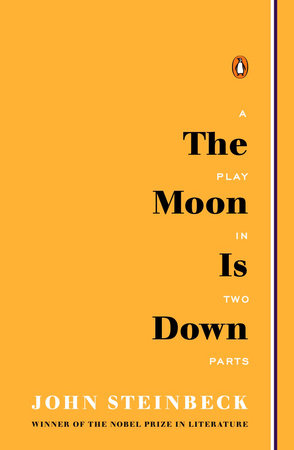The Moon Is Down
A Play in Two Parts

Occupied by enemy troops, a small, peaceable town comes face-to-face with evil imposed from the outside—and betrayal born within the close-knit community
A Penguin Classic
In this masterful tale set in Norway during World War II, Steinbeck explores the effects of invasion on both the conquered and the conquerors. As he delves into the emotions of the German commander and the Norwegian traitor, and depicts the spirited patriotism of the Norwegian underground, Steinbeck uncovers profound, often unsettling truths about war—and about human nature.
Nobel Prize winner John Steinbeck’s self-described “celebration of the durability of democracy” had an extraordinary impact as Allied propaganda in Nazi-occupied Europe. Despite Axis efforts to suppress it (in Fascist Italy, mere possession of the book was punishable by…